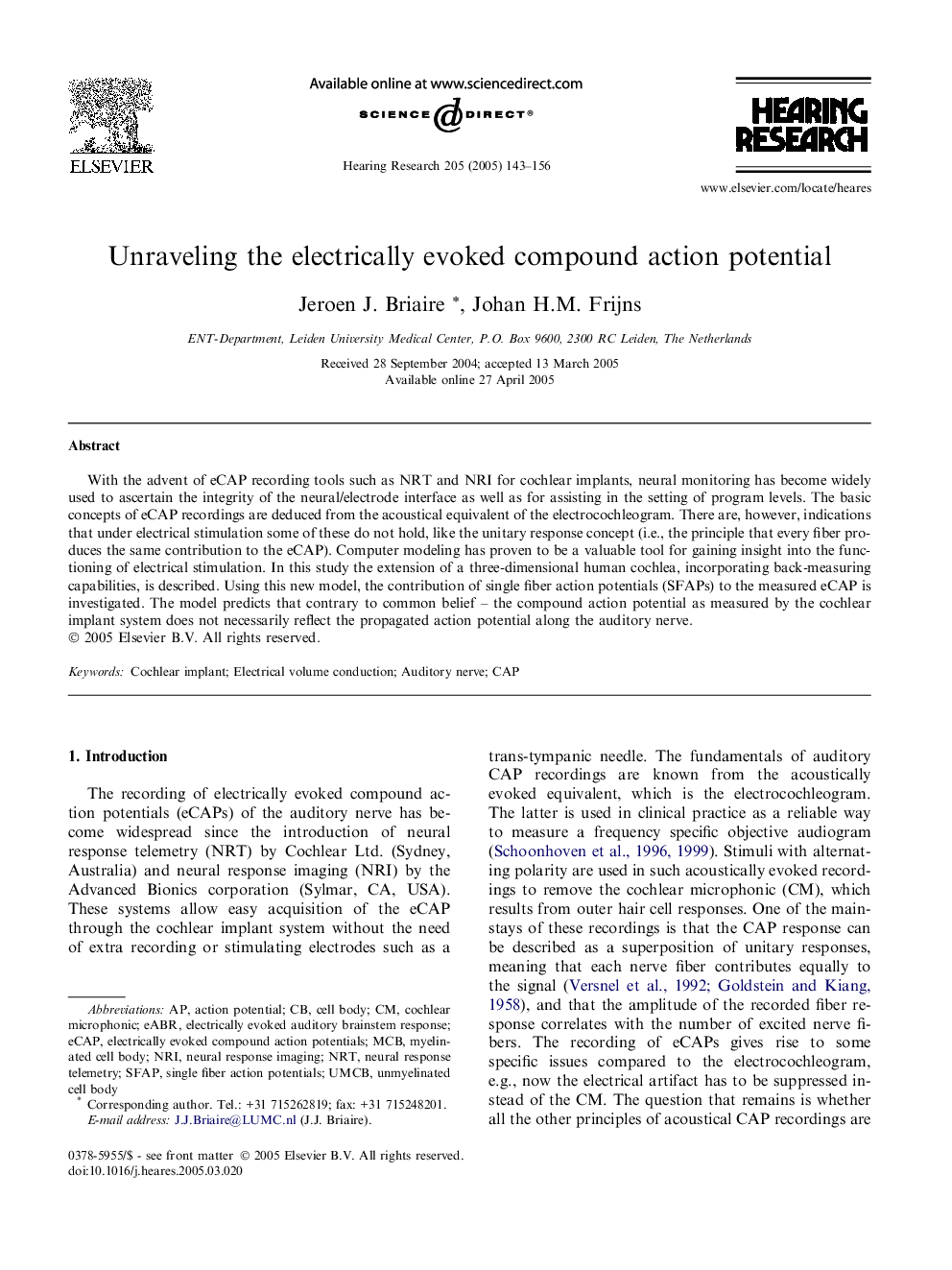| Article ID | Journal | Published Year | Pages | File Type |
|---|---|---|---|---|
| 9436468 | Hearing Research | 2005 | 14 Pages |
Abstract
With the advent of eCAP recording tools such as NRT and NRI for cochlear implants, neural monitoring has become widely used to ascertain the integrity of the neural/electrode interface as well as for assisting in the setting of program levels. The basic concepts of eCAP recordings are deduced from the acoustical equivalent of the electrocochleogram. There are, however, indications that under electrical stimulation some of these do not hold, like the unitary response concept (i.e., the principle that every fiber produces the same contribution to the eCAP). Computer modeling has proven to be a valuable tool for gaining insight into the functioning of electrical stimulation. In this study the extension of a three-dimensional human cochlea, incorporating back-measuring capabilities, is described. Using this new model, the contribution of single fiber action potentials (SFAPs) to the measured eCAP is investigated. The model predicts that contrary to common belief - the compound action potential as measured by the cochlear implant system does not necessarily reflect the propagated action potential along the auditory nerve.
Keywords
Related Topics
Life Sciences
Neuroscience
Sensory Systems
Authors
Jeroen J. Briaire, Johan H.M. Frijns,
